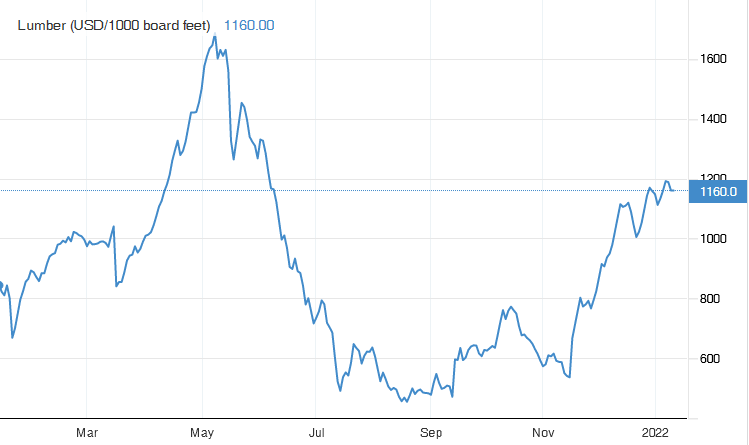
Which stocks were the most profitable for growth six months back? Wall Street is facing new challenges and stocks that were best for growth six months ago are no longer the best today. Already the stimulus has had ramifications. There is more inflation in the United States than the Fed will tolerate, thanks to higher government payouts. However, the best stocks to grow your portfolio are still a viable option. We will be talking about three stocks that may be worth considering and their potential benefits.
Align Technology
As a company with a market share of around 10%, Align Technology is in a good position to grow its business and increase its earnings. The company has also focused on expanding into the international market. It sold more straighteners last year in Europe and the Middle East than anywhere else in the world. To help meet the high demand in these regions, Align Technology is developing a new global manufacturing hub in Poland. There are however some things to be aware.

The PEG rate provides a wider perspective than the P/E. It measures growth and allows investors the ability to compare companies with high potential for growth. EBITDA (or earnings before interest and taxes) is the measure of a company's profitability. It amounts to $1.1 million. This company pays no dividend. This makes it one of the best stocks for growth. You should attend the annual meeting of Align Technology if you plan to hold Align Technology more than a single year.
Universal Display Corporation
It may not be immediately clear why Universal Display Corporation is among the best stocks for growing companies. But the company's history suggests that growth is on the way. Universal Display may see a new partner in panel manufacturing and an increase in OLED-equipped smartphones helping to boost its stock price. The company is also seeking to expand its China market footprint. If all of these factors pan out, it should make a solid pick for growth investors.
Universal Display Corporation is an innovator in OLED technology development, but the company doesn't make the devices we use every day. The company holds several important patents within the industry, including those related to OLED emitters with efficient phosphorescence. Its PHOLED material is used in almost all AMOLED displays. Universal Display's stock ticker is OLED, while its rival eMagin is an early developer of OLED microdisplays and focuses on the defense and consumer VR/AR markets. Despite its outlook on the future, Universal Display is still a top pick for growth investors.
Shopify
Shopify is a high-growth stock. The company's recent strategic partnerships with TikTok and Facebook could give it a major advantage against Amazon. Shopify is also able to generate around 40% of its revenues from subscriptions. Shopify offers high growth potential but comes at a steep price. If you are a risk-averse investor, Shopify is best avoided.

Shopify's strong position in the ecommerce sector is despite these risks. The company's stock price increased from $416 to $1,762 as more consumers switched to shopping online. Shopify's revenue growth rate has been rapid but there is no clear guidance for the next fiscal year. The latest earnings guidance from Shopify stated it expects a lower Q4 revenue growth in FY 2022. But it didn't give details.
FAQ
How Does Inflation Affect the Stock Market?
Inflation has an impact on the stock market as investors have to spend less dollars each year in order to purchase goods and services. As prices rise, stocks fall. Stocks fall as a result.
What is the distinction between marketable and not-marketable securities
The principal differences are that nonmarketable securities have lower liquidity, lower trading volume, and higher transaction cost. Marketable securities can be traded on exchanges. They have more liquidity and trade volume. You also get better price discovery since they trade all the time. There are exceptions to this rule. There are exceptions to this rule, such as mutual funds that are only available for institutional investors and do not trade on public exchanges.
Marketable securities are more risky than non-marketable securities. They generally have lower yields, and require greater initial capital deposits. Marketable securities are typically safer and easier to handle than nonmarketable ones.
A bond issued by large corporations has a higher likelihood of being repaid than one issued by small businesses. The reason is that the former is likely to have a strong balance sheet while the latter may not.
Investment companies prefer to hold marketable securities because they can earn higher portfolio returns.
How can people lose their money in the stock exchange?
Stock market is not a place to make money buying high and selling low. It's a place you lose money by buying and selling high.
The stock market is an arena for people who are willing to take on risks. They will buy stocks at too low prices and then sell them when they feel they are too high.
They want to profit from the market's ups and downs. If they aren't careful, they might lose all of their money.
Statistics
- The S&P 500 has grown about 10.5% per year since its establishment in the 1920s. (investopedia.com)
- Even if you find talent for trading stocks, allocating more than 10% of your portfolio to an individual stock can expose your savings to too much volatility. (nerdwallet.com)
- For instance, an individual or entity that owns 100,000 shares of a company with one million outstanding shares would have a 10% ownership stake. (investopedia.com)
- Ratchet down that 10% if you don't yet have a healthy emergency fund and 10% to 15% of your income funneled into a retirement savings account. (nerdwallet.com)
External Links
How To
How to Open a Trading Account
To open a brokerage bank account, the first step is to register. There are many brokers out there, and they all offer different services. Some brokers charge fees while some do not. Etrade, TD Ameritrade Fidelity Schwab Scottrade Interactive Brokers are some of the most popular brokerages.
Once your account has been opened, you will need to choose which type of account to open. These are the options you should choose:
-
Individual Retirement Accounts (IRAs).
-
Roth Individual Retirement Accounts
-
401(k)s
-
403(b)s
-
SIMPLE IRAs
-
SEP IRAs
-
SIMPLE SIMPLE401(k)s
Each option has different benefits. IRA accounts are more complicated than other options, but have more tax benefits. Roth IRAs are a way for investors to deduct their contributions from their taxable income. However they cannot be used as a source or funds for withdrawals. SIMPLE IRAs can be funded with employer matching funds. SEP IRAs work in the same way as SIMPLE IRAs. SIMPLE IRAs can be set up in minutes. These IRAs allow employees to make pre-tax contributions and employers can match them.
You must decide how much you are willing to invest. This is known as your initial deposit. You will be offered a range of deposits, depending on how much you are willing to earn. Depending on the rate of return you desire, you might be offered $5,000 to $10,000. This range includes a conservative approach and a risky one.
You must decide what type of account to open. Next, you must decide how much money you wish to invest. There are minimum investment amounts for each broker. These minimums vary between brokers, so check with each one to determine their minimums.
You must decide what type of account you want and how much you want to invest. Next, you need to select a broker. You should look at the following factors before selecting a broker:
-
Fees - Make sure that the fee structure is transparent and reasonable. Many brokers will offer rebates or free trades as a way to hide their fees. Some brokers will increase their fees once you have made your first trade. Be wary of any broker who tries to trick you into paying extra fees.
-
Customer service – Look for customer service representatives that are knowledgeable about the products they sell and can answer your questions quickly.
-
Security - Choose a broker that provides security features such as multi-signature technology and two-factor authentication.
-
Mobile apps - Check if the broker offers mobile apps that let you access your portfolio anywhere via your smartphone.
-
Social media presence - Check to see if they have a active social media account. It may be time to move on if they don’t.
-
Technology - Does the broker utilize cutting-edge technology Is the trading platform simple to use? Are there any issues with the system?
Once you have selected a broker to work with, you need an account. Some brokers offer free trials, while others charge a small fee to get started. You will need to confirm your phone number, email address and password after signing up. You will then be asked to enter personal information, such as your name and date of birth. Finally, you will need to prove that you are who you say they are.
After you have been verified, you will start receiving emails from your brokerage firm. You should carefully read the emails as they contain important information regarding your account. The emails will tell you which assets you are allowed to buy or sell, the types and associated fees. Keep track of any promotions your broker offers. These promotions could include contests, free trades, and referral bonuses.
Next, you will need to open an account online. An online account can be opened through TradeStation or Interactive Brokers. Both of these websites are great for beginners. You will need to enter your full name, address and phone number in order to open an account. After you submit this information, you will receive an activation code. This code will allow you to log in to your account and complete the process.
You can now start investing once you have opened an account!